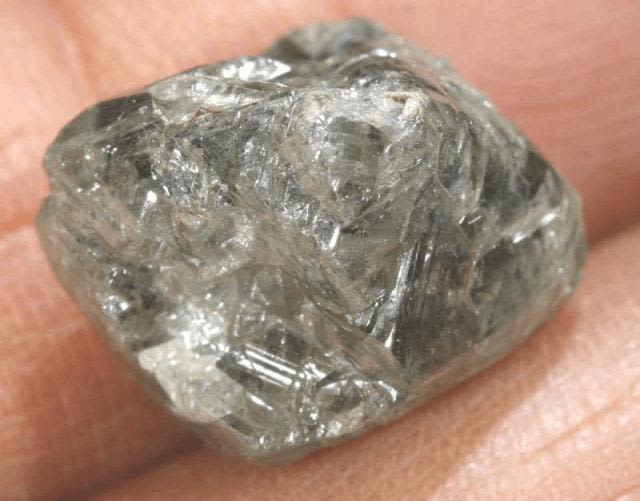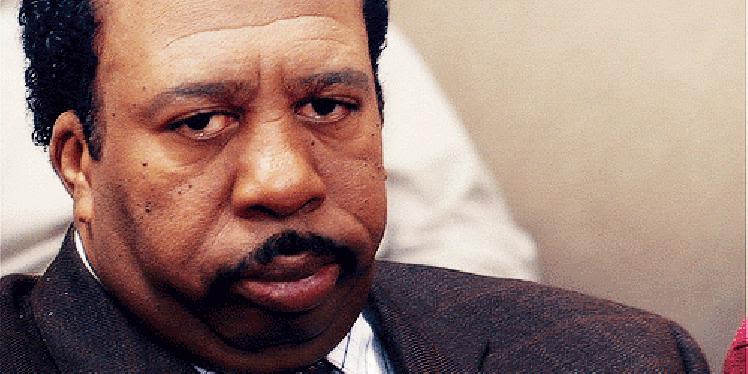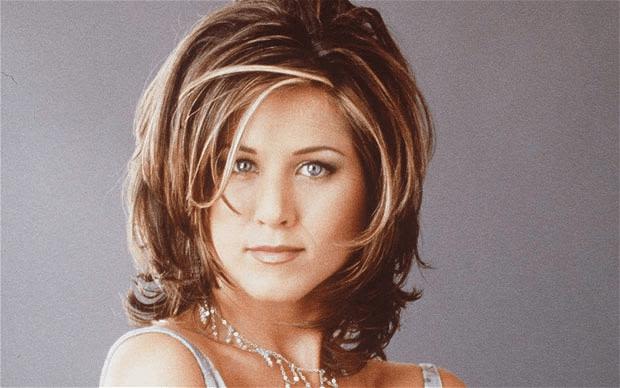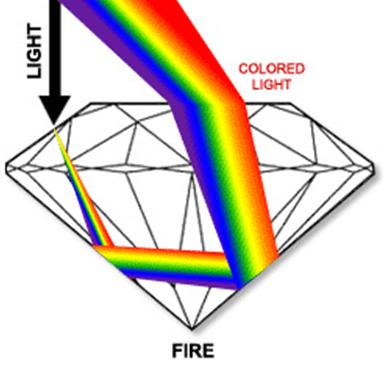What Makes a Diamond the King of Bling? | Rare Carat
Lookin’ to purchase some ice ice, baby? Wanna get your learn on before you flash the cash? Well, my friend you are in luck, because we are about to throw so much knowledge in your face that you’re gonna wish you’d stayed over on YouTube watching those cat videos we all know you love so much.
Today Folks, we are all about that glitz, bling, flash – that’s right, we are going to investigate what makes a diamond sparkle. What makes that little rock so bright it could partially blind your jealous co-worker Janice (not that we endorse that *cough*)? Let’s find out.
TLDR
What Causes Diamonds to Sparkle?
- The way a diamond is cut and cut quality. Most modern diamonds use the ‘brilliant’ cut to maximize light performance characteristics; reflection, refraction, dispersion.
- From these characteristics, brilliance, fire and scintillation result to make diamonds sparkle.
A Rough Start
In order to get to the ‘science’ of diamond sparkle (yes, we will be talking about sciency stuff so prepare yourself), we first need to understand what diamonds look like before they are cut…
Now I don’t know if you guys have ever seen a rough diamond, but to be frank, they dull as all hell:

Blah?
Looks pretty forgettable, right? Yup, just a lump of stone. It’s important to remember however, that although diamonds have been hoarded by us humans for thousands of years (#WeAreAllHoarders), up until about the 14th century diamonds were not cut at all, and simply existed pretty much as they do in that photo. This didn’t stop them from being coveted items though and believe it or not, peeps were loco for diamonds even in their rough state. This is because they were convinced that diamonds held magical powers, and saw them as symbols of ‘manly’ virtues like indestructability and virility...
Yes. That happened.

Things didn’t stay like this for long though, and by the late 19th/early 20th century there were real advances in the world of diamond cutting. These new advances were perfected in 1919 by a young physicist called Marcel Tolkowsky, when he created what we know to be the ‘brilliant cut’ technique. Marcel, the clever clogs, knew that for cut diamonds to sparkle they needed every opportunity to steal light from the world, kick it around inside the stone and then blast it out into your eye. That was actually the technical terminology he used and everything (#FakeHistoryFacts). And so, with the invention of this ‘brilliant cut’ (Thanks Marcel!), we finally had a diamond cut with more drama than an episode of Ru Paul’s Drag Race:

Cutting Edge
What is it about this brilliant cut that makes diamonds look so freakin’ fabulous? Well, Marcel essentially invented a cutting style that allowed light to jump around inside the stone like never before. The brilliant cut has 57 facets (those tiny little flat faces) all around the stone, each placed purposefully so as to take full advantage of the light around it. With this new cutting-edge technique (#DiamondPun) there was now 57 different ways for light to enter a diamond. What a smarty pants Marcel was, right? In essence then, the brilliant cut creates a tiny awesome kaleidoscope on your finger - and who wouldn’t want that?! Only a fool, is the answer. ONLY. A. FOOL.
Let’s dig a little deeper into how those 57 facets work their magic, shall we? Yup, here comes the science bit...

Concentrate
The Science Bit
The brilliant cut is so gawd damn brilliant, because it maximizes three key light performance properties needed to get that blingy look we all crave;
- How the light from the outside world bounces off the different facet of the stone (i.e. ‘reflection’)
- How the light from the outside world bends as it enters the stone (known as ‘refraction’)
- How the light from the outside world scatters around inside the stone (called ‘dispersion’)
When the light bounces, bends and scatters in juuuust the right way, we get what is known in the ‘biz’ as Brilliance, fire and scintillation! You want your diamond jam-packed with these three babies, otherwise you’ve got yourself a dud...

Brilliance:
‘Brilliance’ simply refers to the way that white (colorless) light from the outside world hits the facets of the diamond and reflects back out from the top of the stone. Have you ever looked at a diamond and thought, “WOW – there’s so much light coming from inside that thing”? Yes? That’s brilliance, Baby.

Look into the White Light!
The brilliant cut that our good friend Marcel invented, maximizes the opportunities a brilliant cut diamond has to bounce that white light back at you, which is exactly what we want. This does not mean that every brilliant cut diamond will punch you in the face with brilliance though! Be warned. A poorly cut diamond (even if it has 57 facets – which it must have to be called a brilliant cut), can ‘leak’ faster than a White House Aide to the New York Times. Have a look at these three examples to understand what we mean:

The first is an example of an excellent/ideal cut diamond (i.e. perfect proportions). It’s not too shallow and not too deep. The light enters from the top, bounces around inside like a kid in a bouncy castle, then flies back out from the top of the stone straight into our faces. Result? BRILLIANCE. The second is an example of a diamond that’s cut far too deep, resulting in a diamond shape that lets precious light ‘leak’ out the bottom of the stone. This will leave us with a dull, flat looking diamond. We’ll call this particular one Kellyanne. The third is just as offensive – the light manages to bounce around inside alright, but then jumps off to the side of the diamond rather than back up through the top where we need it to be in order for us to see it. Let’s call this one Steve.
What’s the lesson, folks? Brilliance is white light bounced back from the stone, and you need an excellent/ideal cut to maximize this optical magic. Shine on You Crazy Diamond!
Fire:
While brilliance is all about that white light, fire is all about dat COLOR. As the light from the outside world enters our diamond, the light is broken down (dispersed) into a rainbow of amazing colors that create the most stunning affect, like this:

There Are FLAMES Coming Off This Beauty
The easiest way to understand fire, is to think of the diamond as a little prism – the normal white light enters the diamond (just as with our ‘brilliance’ above), but instead of it reflecting off the facets and leaving again (as white light), the light is actually refracted (or bent) as it enters the diamond. This refraction takes that white light and smashes it up into all the colours of the rainbow, just like this:

The result is (hopefully) a diamond that’s so full of fire that you could toast a damn s’more with it. Just like with brilliance above though, poor cut quality (too shallow/too deep) will restrict the prism-like qualities of that diamond and leave it a bit ‘blah’. Always go for those excellent/ideal cut diamonds, so as to maximise the opportunities your diamond has to do this:

That's Your Diamond Giving Off Fire
Scintillation:
So far we’ve learned that ‘ brilliance’ occurs when white light is reflected back out into our eyes from inside the diamond. We’ve also learned that ‘fire’ occurs when light enters the diamond (bending as it goes) and is then scattered around inside resulting in an array of different colors. The final ingredient needed for the ultimate sparkler then, is scintillation. Scintillation is basically the diamond version of that person you know who is always a ‘wow’ at parties, but nobody really knows anything about. Do they have a job? Do they cry into their cereal every morning? Did they get married once in Vegas? Do they eat gluten? Nobody knows, but they entertaining as hell so it doesn’t matter.
While brilliance and fire can be observed in a picture, scintillation refers to the way the diamond catches the light as it moves, and so it’s not really possible to capture it in a photo. Scintillation is all about how that rock catches the light as it moves through the world. The key to this magical scintillation is a good contrast within the diamond of light and dark spaces. Think of scintillation as being at its best when there is a great balance between areas that will reflect/refract/disperse light, and those that will not:

The more opportunity for contrast, the more that diamond will sparkle/scintillate as it moves around in the light! A diamond that has too many ‘light’ spaces and not enough ‘dark’ spaces, will result in a flat looking stone. Equally, a diamond with too many ‘dark’ spaces relative to the ‘light’ spaces will leave you with a diamond that’s got little in the way of sparkle. You need that contrast to exist in order to take advantage of how the light/dark play with each other. This is why you need a diamond that has an excellent/ideal cut – the diamond cutter has cut this stone so as to produce the exact right type of contrast inside the stone, which will mean banging sparkle for you as you flash that ring in everyone’s face.
What Have We Learned?
Let’s sum up what we’ve covered today, so that you can go forth and shop like the diamond pro you now are. First, we learned that a diamond needs to be cut before it reveals its true sparkle. No rough stones here, thank you very much. Next, we were introduced to Marcel - our buddy who invented the brilliant cut (the 57 facets dude). Most diamonds are cut this way now (or very similarly) so as to optimize the optical properties known as reflection, refraction and dispersion. From here we discovered that the ‘sparkle’ of a diamond that we all know and love comes from three different characteristics that are the result of these optical properties above. These three characteristics are brilliance, fire and scintillation. Finally, we must all remember that in order to get a diamond with the absolute brightest brilliance, the hottest fire and the punchiest scintillation, we really need to be choosing diamonds that are excellent/ideal cut grades.
Do you feel more knowledgeable? Feelin’ like a pro? I bet you are, you saucy minx. Now go buy a sparkler that will knock people’s socks off.


Diamond Sparkle & Bling FAQs